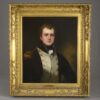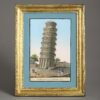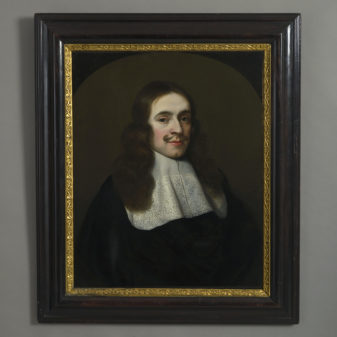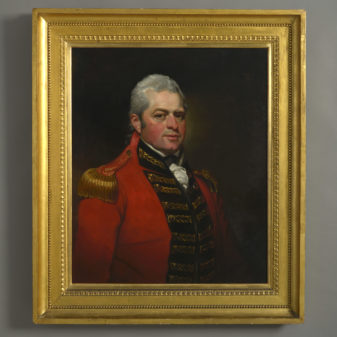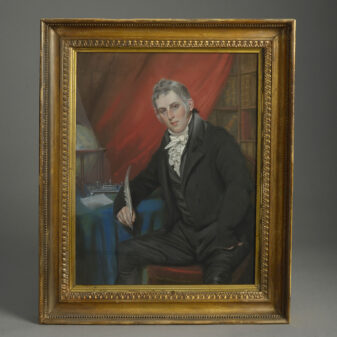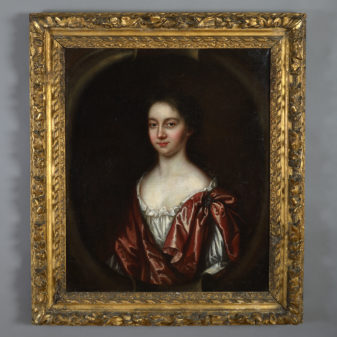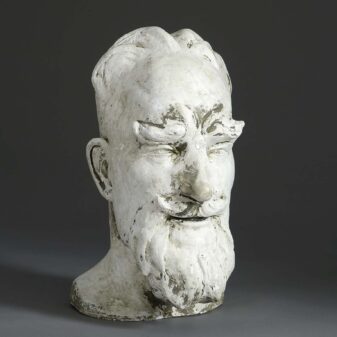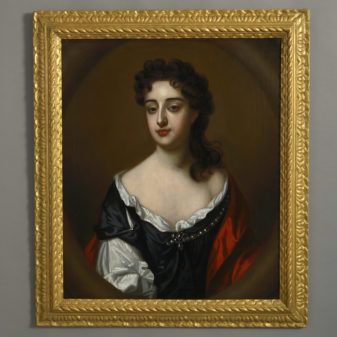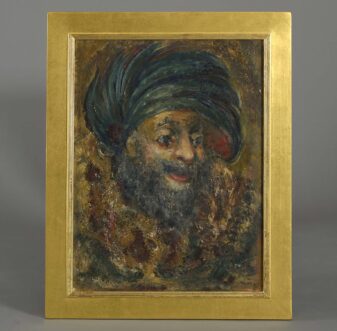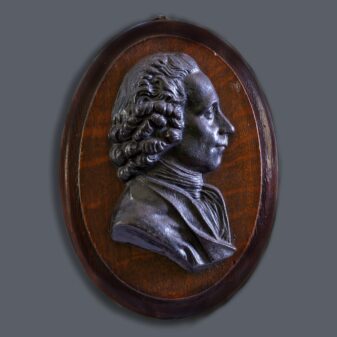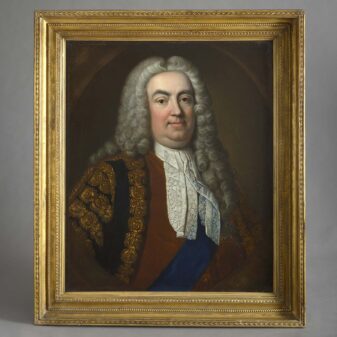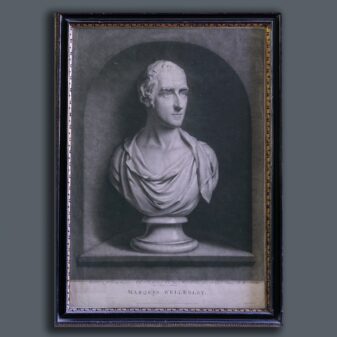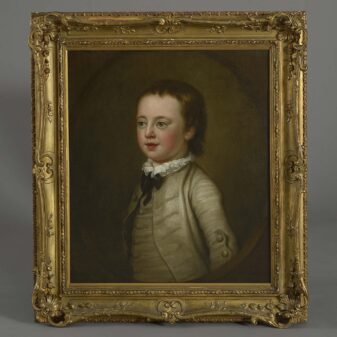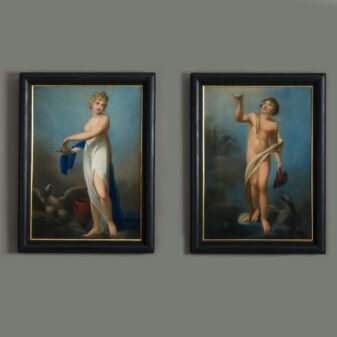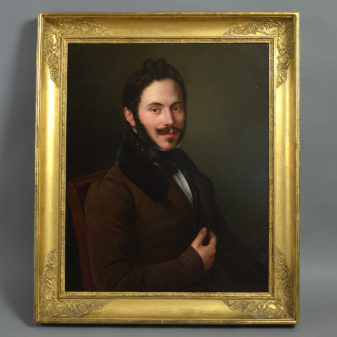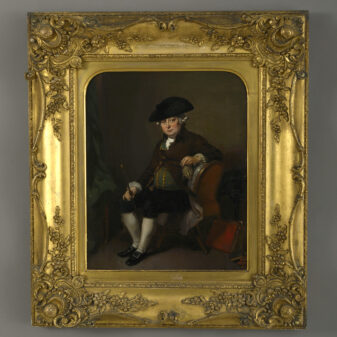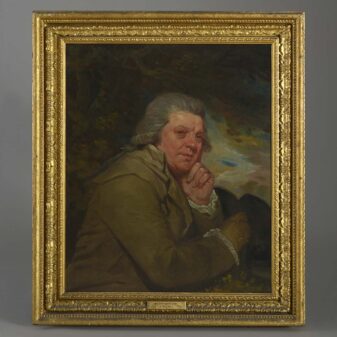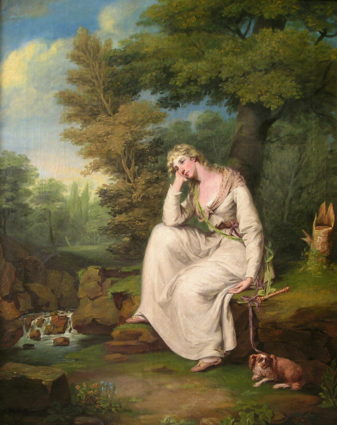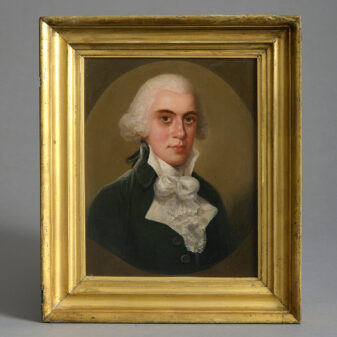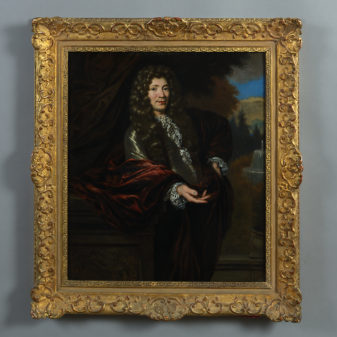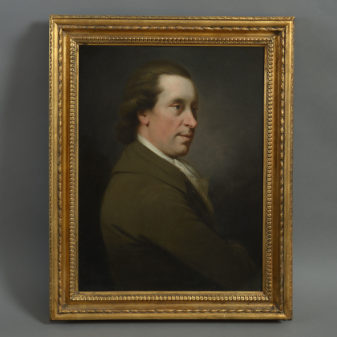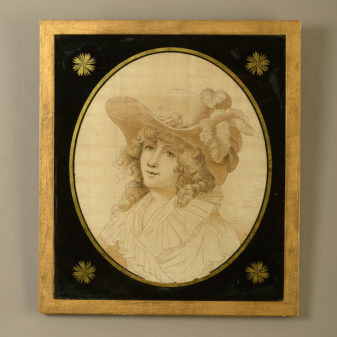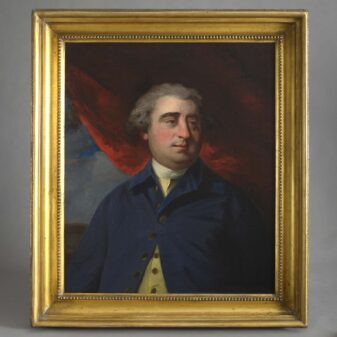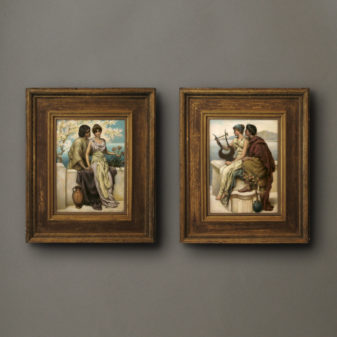Circa 1655 England
Studio of Sir Peter Lely, Portrait of Oliver Cromwell
£12,500
SOLD
Height 37 1/2 inches (95.25 cm)
Width 32 inches (81.5 cm)
Depth 2 inches (5 cm)
Oil on canvas; held in an ebonsied period style frame.
Charles II’s propagandists cast Cromwell as a brutal despot whereas critics now tend to focus on his Puritan fundamentalism. This, apparently, was a dour, austere man – who censored playwrights, disdained culture and showed no interest in the visual arts. Certainly he had no official painter and portraits of Cromwell are few and far between. One of the most famous is by Robert Walker, from 1649, in the National Portrait Gallery: the image clearly inspired by the poses in aristocratic portraits by van Dyck, who had died before the outbreak of Civil War in 1641. Insofar as it existed at all, Cromwellian portraiture, it seems, was merely an extension of portraiture under Charles I.
Peter Lely and miniaturist Samuel Cooper also depicted him, but Cromwell’s attitude to his own image is summed up by his request to “use all your skill to paint my picture truly like me and not flatter me at all. Remark all these ruffness, pimples, warts and everything as you see me”. Cooper duly captured him as such, as did Lely, in sober black armour, without a hint of decoration and with the receding hairline and blotchy cheeks – not to mention warts. It has been pointed out that plainness had a political purpose, presenting Cromwell as a “sober, honest alternative to the tradition of royal vanity, excess and arrogance he’d just replaced”.
With the Restoration of the monarchy in 1660 such images were scorned and despised. Lely however was recognised as the most outstanding painter of the time and was embraced by the new King as his principal painter. Diana Dethloff states that during the Restoration “Lely dominated court portraiture. Other artists’ work was often judged in the context of his or Van Dyck’s, with many contemporaries regarding Lely as the latter’s natural successor, especially from the way Lely presented himself in his self-portraits, the lavish lifestyle he adopted, and the way he ran his studio.”
Lely’s portrait had an ornamental cartouche and subsequent versions simplified this as in the portrait here. It was a popular image and Lely together with his studio executed a number of versions which often went to diplomats and other political functionaries. The example presented here has been in a private collection for at least a hundred years and is perhaps one of the best examples to emerge in recent times.

